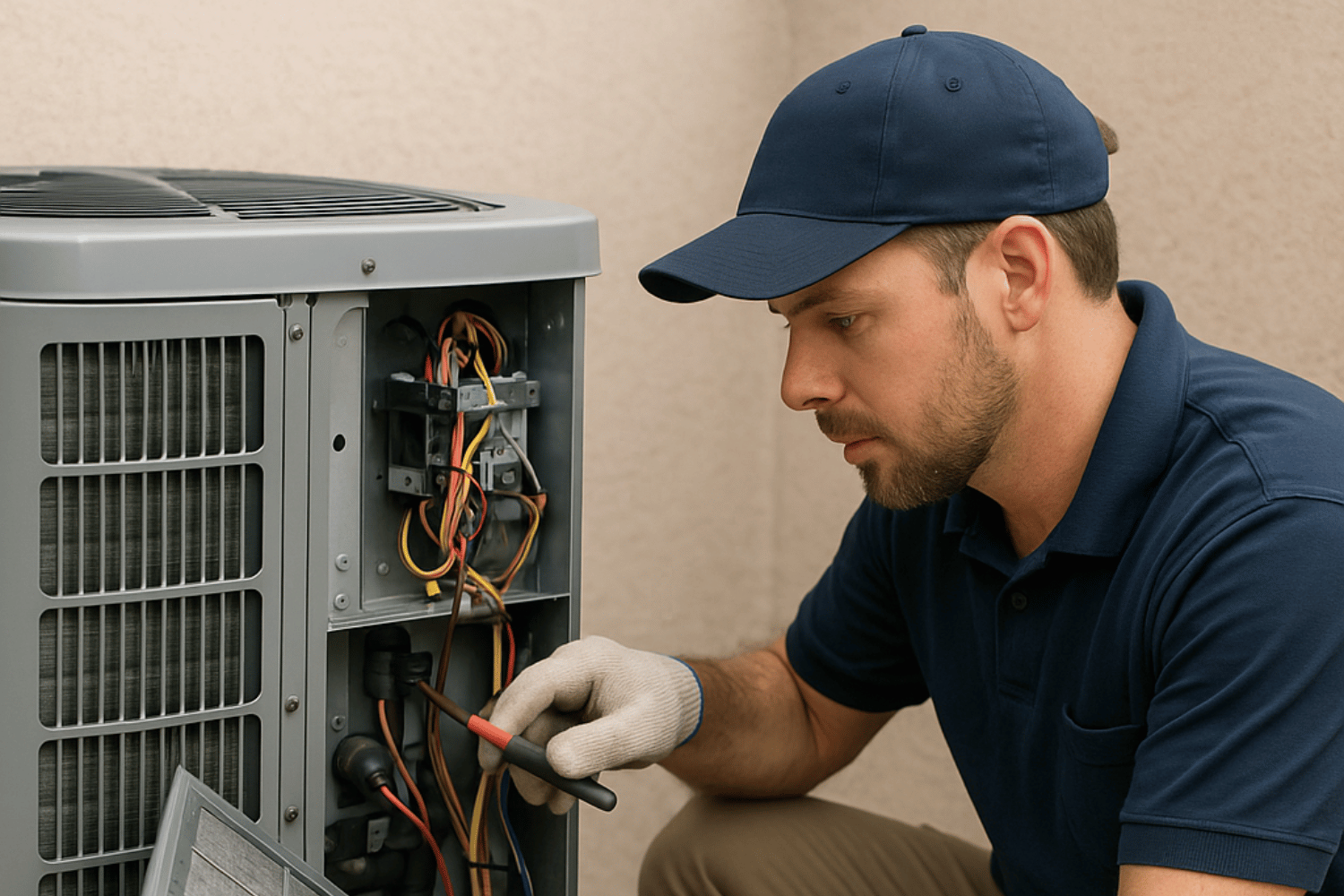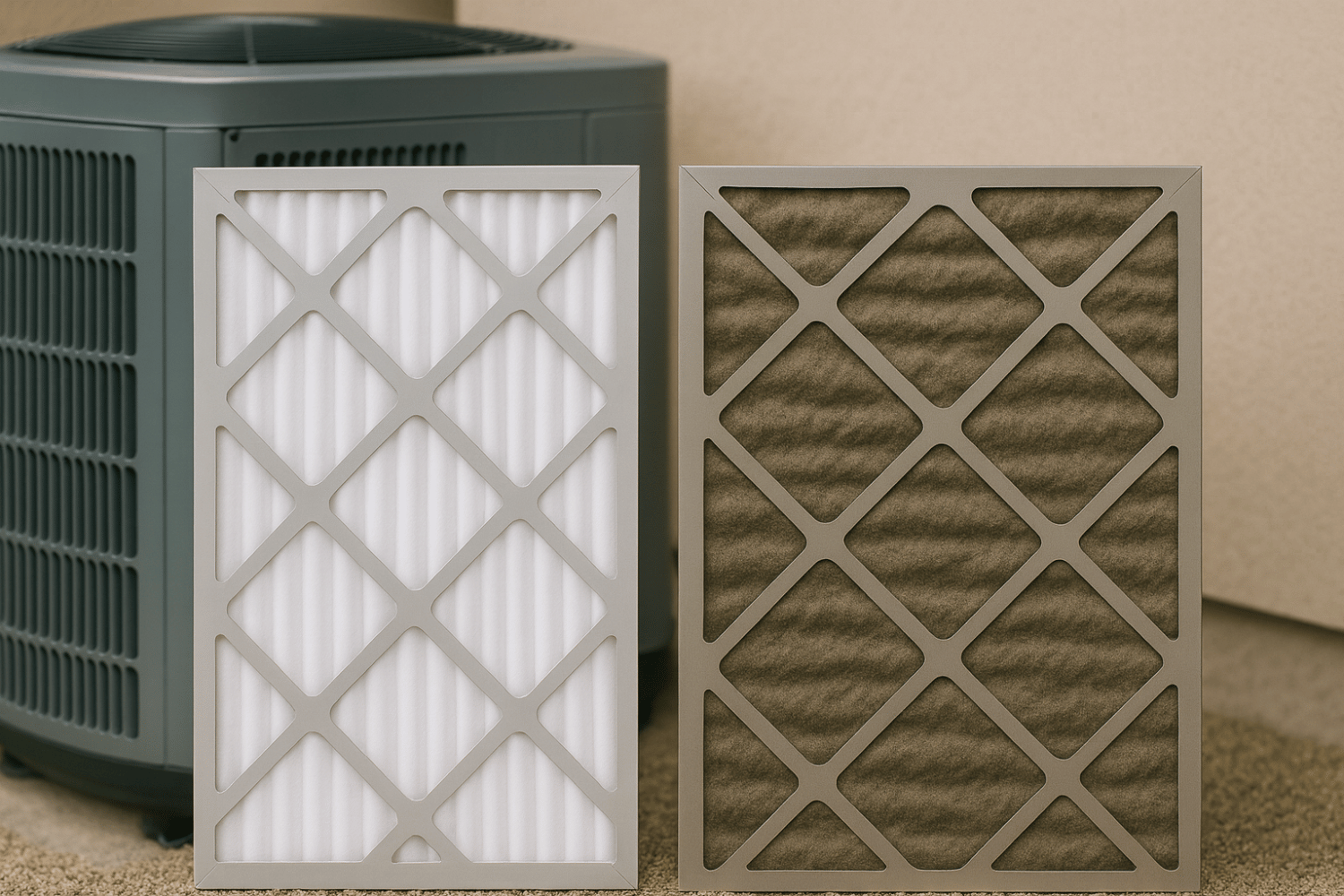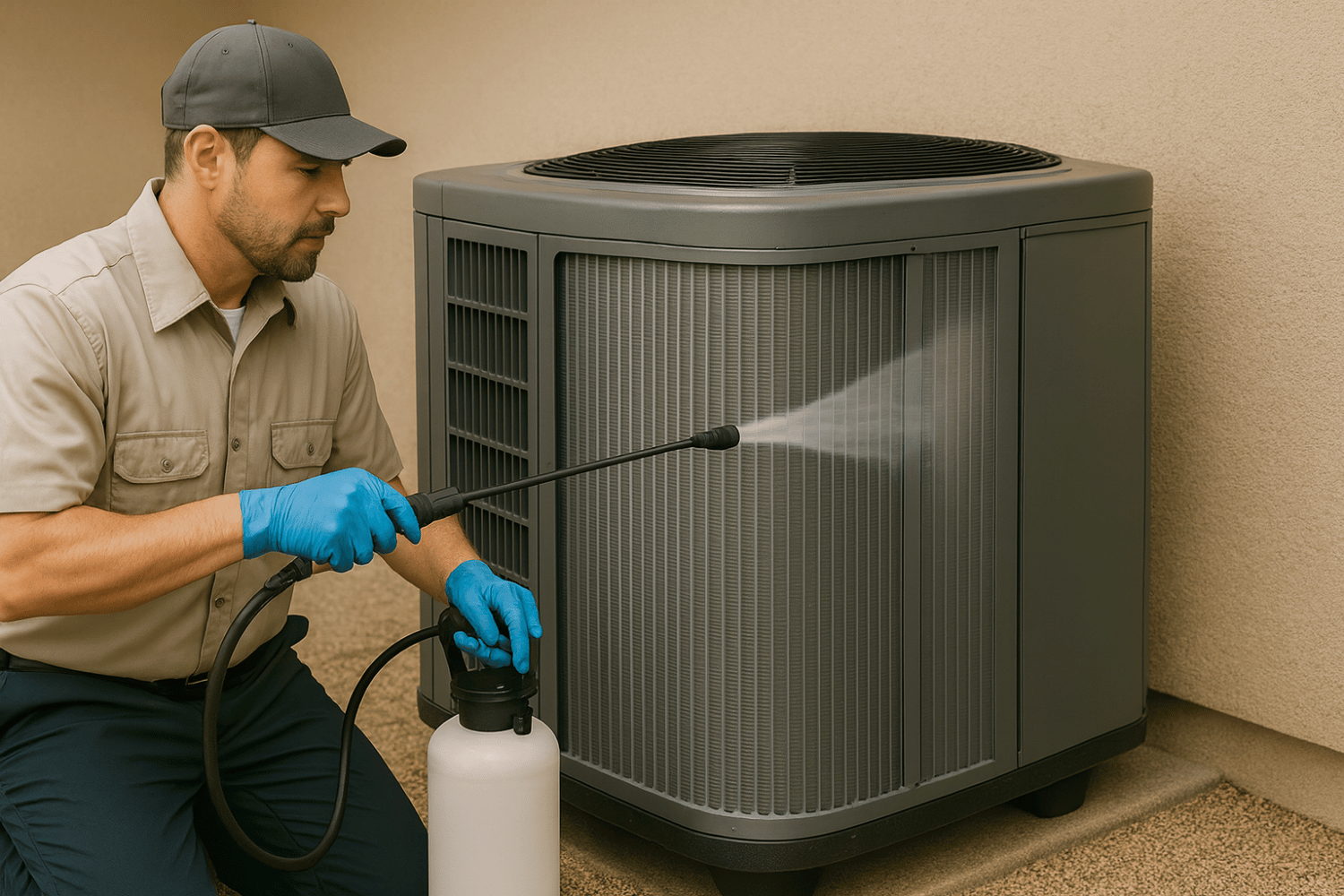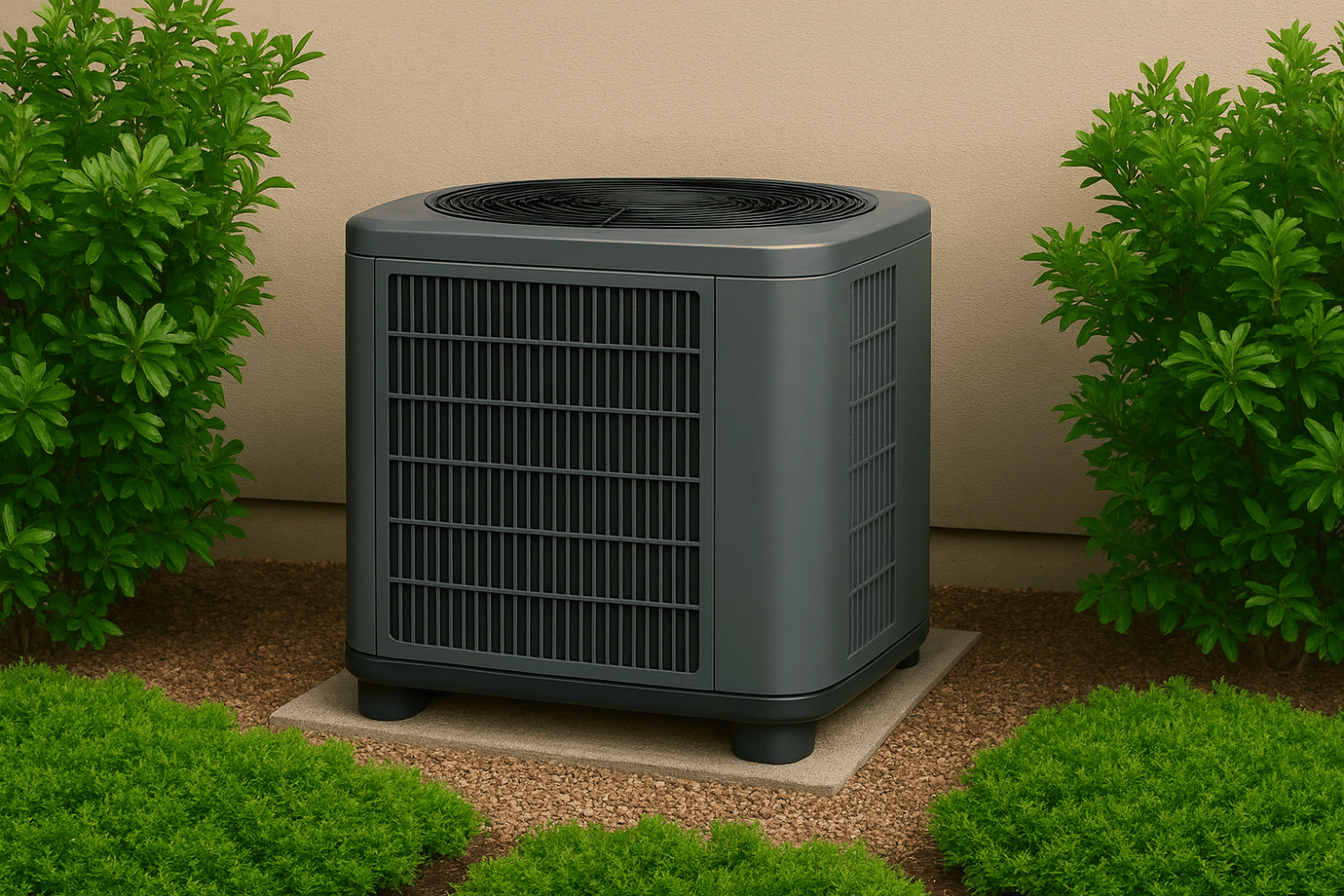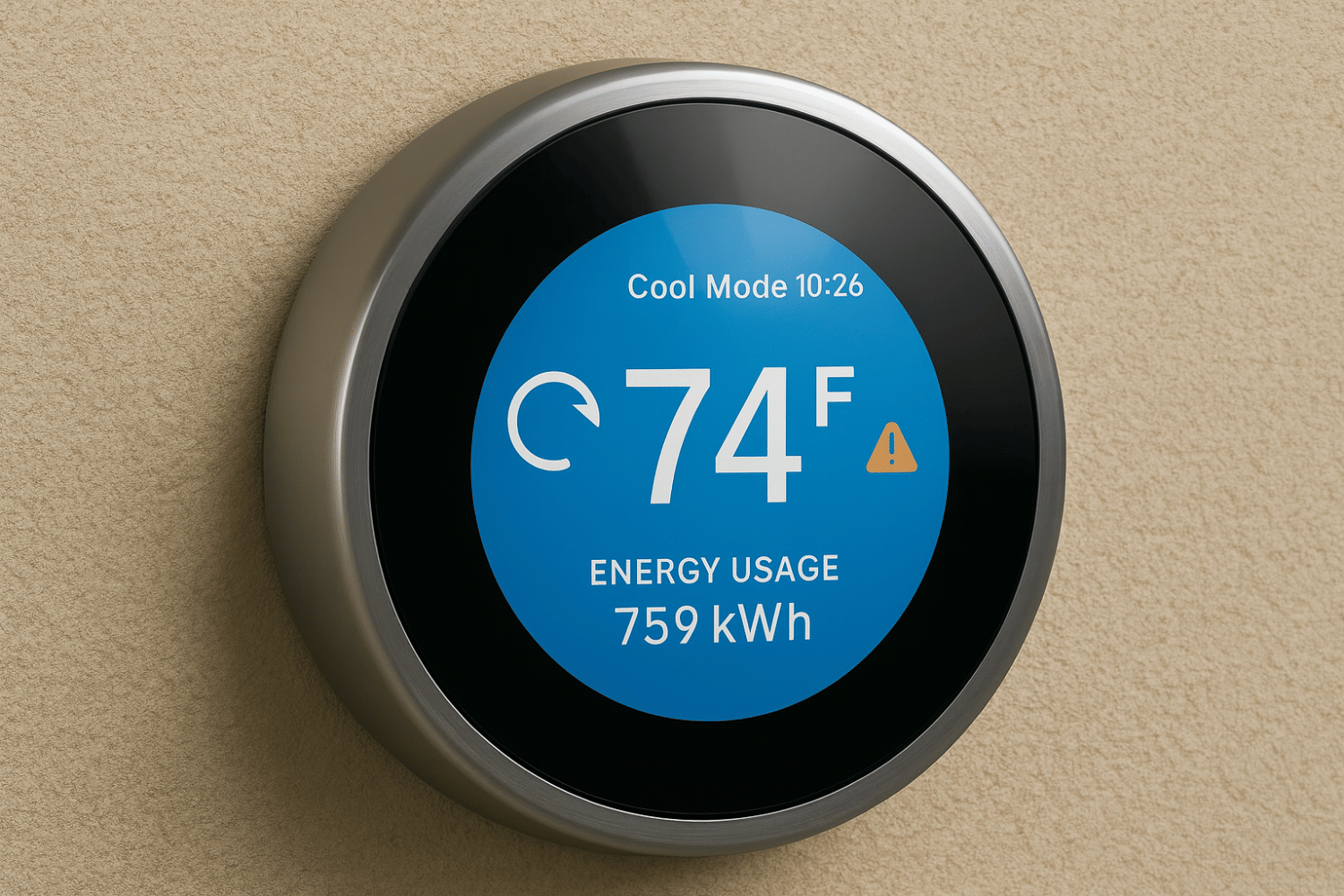HVAC Maintenance: Your Complete Guide to System Care and Efficiency
Your HVAC system works around the clock to keep your home comfortable, but without proper care, it could be costing you thousands in unnecessary energy bills and repairs. Regular HVAC maintenance isn’t just about preventing breakdowns—it’s about optimizing your system’s performance, extending its lifespan, and ensuring your family breathes clean air year-round.
At J&RS, we’ve seen firsthand how proper maintenance transforms struggling systems into efficient, reliable units that serve homeowners for decades. This comprehensive guide will show you exactly how to care for your HVAC system, when to handle tasks yourself, and when to call in the professionals.
Key Takeaways
- Regular HVAC maintenance reduces energy consumption by up to 30% and prevents 95% of costly system breakdowns
- Professional maintenance should be scheduled twice yearly – spring for cooling systems and fall for heating systems
- Simple DIY tasks like changing filters monthly and keeping outdoor units clear can significantly improve system performance
- Proper maintenance extends HVAC system lifespan by 5-15 years and maintains warranty coverage
- Indoor air quality improves dramatically with regular filter changes and duct cleaning
- Annual maintenance costs typically range from $150-$500 but save thousands in prevented repairs and energy bills
Why HVAC Maintenance is Critical for Your Home
Your HVAC systems represent the largest energy consumer in your home, accounting for approximately 40% of your total energy consumption. When these systems operate efficiently through regular maintenance, the impact on your energy costs becomes immediately apparent. Well maintained system components work together seamlessly, ensuring proper airflow and optimal heat transfer throughout your home.
The statistics speak volumes about the importance of preventive maintenance. Dirty condenser coils alone can increase your energy bills by 10-20% because restricted heat transfer forces your air conditioner’s compressor to work significantly harder. This additional strain not only drives up energy costs but also accelerates component wear, leading to premature system failure.
Perhaps most compelling is that regular maintenance prevents 95% of system breakdowns. These aren’t minor inconveniences—HVAC equipment failures typically occur during peak performance seasons when you need your heating system or cooling system most. Emergency repairs during these critical times often cost $1,000-$5,000, compared to annual maintenance programs that typically run $150-$500.
Indoor air quality represents another critical factor often overlooked by homeowners. EPA studies consistently show that indoor air contains 2-5 times more pollutants than outdoor air, including allergens, dust, volatile organic compounds, and microbial growth. Your air conditioning system and heating system serve as your home’s primary air filtration and circulation network, making their maintenance essential for your family’s health and comfort.
Essential HVAC Components That Require Regular Maintenance
Understanding your HVAC equipment’s key components helps you recognize when maintenance is needed and ensures your system operates efficiently year-round. Each component plays a vital role in delivering cool air during summer and warm air during winter, and neglecting any single element can compromise your entire system’s performance.
Air Filters and Indoor Air Quality
Air filters serve as your HVAC system’s primary defense against airborne contaminants, directly impacting both equipment longevity and indoor air quality. Modern systems accommodate various filter types, each designed for specific performance requirements and home environments.
Filter Types and Selection
- Disposable Fiberglass: MERV Rating 1-4, best for basic equipment protection, replace monthly
- Pleated Media: MERV Rating 5-13, suitable for general homes and allergy sufferers, replace every 1-3 months
- HEPA: MERV Rating 17-20, ideal for severe allergies and medical needs, replace every 6-12 months
- Reusable/Washable: MERV Rating 1-4, for cost-conscious homeowners, clean monthly
Selecting the appropriate air filter requires balancing filtration efficiency with your system’s airflow requirements. Higher MERV ratings provide superior air quality benefits but require compatible blower capacity to ensure proper airflow throughout your home.
Step-by-Step Filter Replacement
1.Turn off your HVAC system at the thermostat and electrical panel
2. Locate the filter compartment (typically near the air handler or return duct)
3. Note the airflow direction arrows on your old filter
4. Remove the dirty filter and inspect it for damage or excessive debris
5. Insert the new air filter with arrows pointing toward the blower
6. Ensure a snug fit without gaps around the edges
7. Restore power and note the replacement date
A dirty filter restricts airflow, forcing your system to work harder and consume more energy. Systems with clogged filters can experience up to 15% efficiency loss while simultaneously degrading air quality throughout your home.
Coils, Fins, and Heat Transfer Components
Your air conditioning system relies on two critical coils for heat transfer: the evaporator coil (indoor) and condenser coils (outdoor). These components work together to move heat from inside your home to the outdoor environment, making their cleanliness essential for efficient operation.
Evaporator Coil Maintenance
The evaporator coil absorbs heat and humidity from your home’s air as refrigerant flows through its passages. When dirt accumulates on these surfaces, it acts as insulation, preventing proper heat transfer and often leading to coil freezing or inadequate cooling. Signs of a dirty evaporator coil include poor cooling performance, increased humidity, and ice formation on the coil itself.
Condenser Coil Care
Your outdoor unit houses the condenser coils responsible for rejecting heat to the outside air. These coils face constant exposure to pollen, grass clippings, dust, and other airborne debris. Dirty condenser coils dramatically reduce your system’s cooling capacity while forcing your air conditioner to run longer cycles, significantly increasing energy costs.
Safe Cleaning Procedures
For outdoor units, homeowners can perform basic cleaning using a garden hose with low pressure, working from inside the unit outward to avoid pushing debris deeper into the coil fins. Always ensure power is disconnected before attempting any cleaning. For indoor evaporator coils, professional cleaning is recommended due to the delicate nature of the components and potential for water damage.
Aluminum fins surrounding the coils bend easily and require careful handling. Professional technicians use specialized fin combs to straighten bent fins and restore proper airflow patterns.
Condensate Drains and Water Management
As your air conditioning system cools humid air, it removes moisture that must be properly drained away from your home. The condensate drain system channels this water through drain lines to prevent water damage and maintain healthy indoor humidity levels.
Clogged condensate drains rank among the most common HVAC maintenance issues. Blockages typically result from algae growth, dust accumulation, or debris entering the drain line. Warning signs include water pooling near your indoor unit, musty odors, elevated humidity levels, or your system shutting down unexpectedly.
DIY Drain Maintenance
1. Locate your condensate drain line (usually a PVC pipe near your outdoor unit)
2. Remove any visible debris from the drain opening
3. Use a stiff wire to gently clear blockages
4. Flush the line with water to verify proper drainage
5. For persistent clogs, use a wet/dry vacuum to suction debris from the drain line
To prevent clogs, inspect and clean your condensate drain at the beginning of each cooling season. Some homeowners add a small amount of bleach solution quarterly to prevent algae growth, though this should be done carefully to avoid damaging drain components.
Seasonal HVAC Maintenance Schedule
Timing your HVAC maintenance with seasonal transitions ensures your heating system and cooling systems are prepared for peak demand periods while addressing wear that occurred during the previous season. This proactive approach prevents emergency breakdowns and maintains optimal system efficiency throughout the year.
Spring Maintenance Checklist (March-April)
Spring preparation focuses on readying your air conditioning system for the upcoming cooling season while addressing any winter-related issues that may have developed.
Spring Maintenance Checklist (March-April)
- Replace air filters and inspect ductwork for damage from winter settling
- Clean evaporator coil and check refrigerant levels for proper cooling capacity
- Clear debris from outdoor units that accumulated during winter months
- Test thermostat operation and calibrate settings for accurate temperature control
- Inspect condensate drains and clear any blockages before heavy usage begins
- Schedule professional AC tune-up to identify potential issues before summer heat arrives
Outdoor Unit Preparation
Remove protective covers if used, clear vegetation that may have grown too close (maintain at least two feet of clearance), and gently rinse condenser coils with a garden hose to remove winter debris. Check that the unit sits level and that electrical connections remain secure.
Fall Maintenance Checklist (September-October)
Fall maintenance shifts focus to your heating system, ensuring reliable operation throughout the winter while protecting against cold-weather challenges.
Critical Fall Preparations:
- Replace air filters and inspect heating system components for wear
- Check furnace ignition system and heat exchanger for cracks or damage
- Clean vents and flues to ensure proper ventilation and safety
- Test carbon monoxide detectors and replace batteries as needed
- Inspect insulation around pipes and HVAC equipment to prevent freezing
- Schedule professional heating system tune-up before cold weather arrives
Safety Considerations
Fall maintenance places special emphasis on safety systems. Carbon monoxide detection becomes critical with heating system operation, and heat exchanger inspections can identify dangerous cracks that might allow combustion gases to enter your home’s air supply.
Winter and Summer Ongoing Tasks
Year-round vigilance helps identify developing issues before they become major problems, ensuring your system operates efficiently regardless of season.
Continuous Monitoring Tasks:
- Listen for unusual sounds that might indicate mechanical problems or loose components
- Keep outdoor units clear of snow, ice, and debris that can restrict airflow
- Verify proper airflow through all vents and registers in your home
- Check thermostat settings and programming to ensure optimal comfort and efficiency
- Inspect visible electrical connections for signs of wear, corrosion, or damage
Seasonal Adjustments
Winter requires special attention to heat pump outdoor units, which must remain clear of snow and ice to function properly. Summer monitoring focuses on ensuring adequate airflow around outdoor units and watching for signs of refrigerant leaks or electrical issues.
DIY HVAC Maintenance Tasks You Can Handle
Homeowners can safely perform several important maintenance tasks that significantly impact system performance and efficiency. Understanding which tasks you can handle yourself helps reduce maintenance costs while ensuring critical care isn’t neglected between professional visits.
Monthly Filter Changes and Airflow Optimization
Monthly air filter replacement represents the most important DIY maintenance task you can perform. This simple action directly impacts air quality, system efficiency, and equipment longevity while requiring no special tools or technical knowledge.
Filter Installation Best Practices:
1 .Measure your current filter to ensure proper replacement size
2. Choose appropriate MERV rating based on your family’s air quality needs
3. Install with airflow arrows pointing toward your system’s blower
4. Ensure complete seal around filter edges to prevent bypass
5. Mark installation date on the filter frame for tracking purposes
Beyond filter changes, ensure proper airflow by keeping supply and return vents unobstructed. Furniture, curtains, and other household items can significantly restrict airflow, forcing your system to work harder and reducing comfort in affected areas.
Outdoor Unit Care and Clearance
Your outdoor unit requires regular attention to maintain peak performance and prevent damage from environmental factors. These tasks require basic tools and can be completed safely by most homeowners.
Outdoor Unit Maintenance Steps:
Important Safety Notes
Always disconnect power before performing any cleaning or maintenance on outdoor units. Avoid using high-pressure washers or harsh chemicals that might damage delicate coil fins or electrical components. If you notice significant damage or bent fins, contact professional technicians for proper repair.
When to Call Professional HVAC Technicians
Understanding the boundaries between DIY maintenance and professional service protects both your safety and your HVAC equipment investment. Certain tasks require specialized training, tools, and licensing to perform safely and effectively.
Annual Professional Maintenance Services
Professional technicians bring expertise and specialized equipment that ensure comprehensive system evaluation and optimization. Their training allows them to identify potential issues before they become costly repairs while performing tasks that homeowners cannot safely handle.
Comprehensive Professional Services Include:
Professional maintenance also includes tasks like checking and adjusting gas pressures, testing safety controls, and verifying proper combustion in gas-fired equipment. These procedures require specific training and certification to perform safely.
Emergency Repair Situations
Certain symptoms indicate immediate professional attention is required to prevent safety hazards, equipment damage, or extended system outages. Recognizing these warning signs helps you respond appropriately when problems develop.
Call Immediately For:
System Performance Issues
Less urgent but still important professional situations include poor airflow, uneven heating or cooling, frequent cycling, or gradually increasing energy bills. These symptoms often indicate developing problems that professional diagnosis can address before they become emergencies.
Cost Benefits and Energy Savings
Understanding the financial impact of regular HVAC maintenance helps homeowners make informed decisions about their system care investment. The numbers consistently demonstrate that preventive maintenance provides excellent return on investment through multiple financial benefits.
Financial Impact of Regular Maintenance
Annual maintenance costs typically range from $150-$500 per system, depending on your location and system complexity. This investment prevents emergency repairs that average $1,000-$5,000 for major component failures like compressor replacement or heat exchanger repair.
Documented Energy Savings:
These energy bill reductions compound over time, often saving homeowners thousands of dollars over their system’s lifespan. Well maintained systems also operate more quietly and provide more consistent comfort throughout your home.
System Lifespan Extension
Proper maintenance extends HVAC equipment life from a typical 10-15 years to 15-20 years or more. This extension delays major capital expenditures while maintaining warranty coverage that often requires documented annual maintenance.
Property Value Benefits
Regular maintenance records increase home resale value by demonstrating responsible ownership and reducing buyer concerns about immediate HVAC replacement needs. Real estate professionals consistently report that well-maintained systems facilitate smoother transactions and support asking prices.
Modern HVAC Technology and Maintenance Considerations
Current HVAC systems incorporate advanced technologies that require updated maintenance approaches while offering enhanced efficiency and comfort capabilities. Understanding these innovations helps homeowners optimize their system’s performance and prepare for future upgrades.
Smart System Integration and Monitoring
Smart thermostats and connected HVAC systems provide unprecedented insight into system performance while enabling remote monitoring and optimization. These technologies can alert homeowners to maintenance needs and optimize energy consumption automatically.
Advanced Features Include:
Smart systems can detect filter replacement needs, identify efficiency degradation, and even schedule professional maintenance based on actual system usage rather than arbitrary time intervals.
Environmental Considerations and New Refrigerants
The HVAC industry faces significant regulatory changes as HFC refrigerant production decreases by 40% in 2024 under the American Innovation and Manufacturing Act. This transition affects both new equipment and existing system maintenance requirements.
Refrigerant Transition Impact:
These changes emphasize the importance of working with qualified technicians who understand new refrigerant requirements and can help homeowners navigate the transition to more environmentally friendly systems.
Variable-speed compressors and ECM blower motors in modern systems offer superior efficiency but require precise filter sizing and professional calibration to achieve optimal performance. These advanced components make regular maintenance even more critical for achieving designed efficiency levels.
Summary
Regular HVAC maintenance represents one of the smartest investments you can make in your home’s comfort, efficiency, and value. The evidence is clear: proper maintenance reduces energy costs by up to 30%, prevents 95% of system breakdowns, and extends equipment life by 5-15 years. These benefits translate into thousands of dollars in savings while ensuring your family enjoys reliable comfort and healthy indoor air quality year-round.
The key to success lies in understanding which tasks you can handle yourself and when to rely on professional expertise. Monthly air filter changes, basic outdoor unit care, and seasonal preparation help maintain peak performance between professional visits. However, complex tasks involving electrical components, refrigerant systems, and safety controls require qualified technicians to ensure safe, effective service.
At J&RS, we understand that your HVAC system is a significant investment that deserves professional care. Our certified technicians stay current with the latest technology and environmental regulations, ensuring your system receives the expert attention it needs to operate at peak performance for years to come.
Don’t wait for an emergency to invest in your system’s health. Contact J&RS today to schedule your seasonal maintenance and experience the peace of mind that comes with professional HVAC care. Your comfort, savings, and system longevity depend on the choices you make today.
Frequently Asked Questions
How often should I change my HVAC filter?
Change air filters every 1-3 months, with monthly replacement recommended for homes with pets, allergies, or high system usage. Check filters monthly and replace them when they appear dirty or clogged, as this simple task significantly impacts both air quality and system efficiency.
What’s included in professional HVAC maintenance?
Professional maintenance includes comprehensive system inspection, filter replacement, coil cleaning, condensate drain clearing, refrigerant level checking, electrical connection inspection and tightening, thermostat calibration, and safety testing. Technicians also lubricate moving parts and test all safety controls.
Can I perform HVAC maintenance myself?
Homeowners can safely handle filter changes, basic outdoor unit cleaning, vent cleaning, and condensate drain maintenance. However, electrical work, refrigerant handling, and deep component cleaning require professional technicians with proper training and certification.
How much does annual HVAC maintenance cost?
Annual professional maintenance typically costs $150-$500 per system, depending on your location and system complexity. This investment prevents emergency repairs costing $1,000-$5,000 while reducing energy bills by 15-30% through improved efficiency.
What are signs my HVAC system needs professional attention?
Call professionals immediately for complete heating or cooling loss, strange odors (especially gas or burning smells), unusual sounds like grinding or squealing, water leaks, electrical issues, or carbon monoxide detector alarms. Poor airflow or rising energy bills also warrant professional diagnosis.
How long do HVAC systems last with proper maintenance?
Well maintained HVAC systems typically last 15-20 years compared to 10-12 years with poor maintenance. Regular care prevents premature component failure while maintaining warranty coverage that often requires documented annual maintenance.
Is HVAC maintenance required for warranty coverage?
Yes, most manufacturers require documented annual professional maintenance to honor warranty claims. Keep detailed records of all maintenance activities, including filter changes and professional service visits, to protect your warranty coverage.
What’s the difference between tune-ups and repairs?
Tune-ups are scheduled preventive maintenance designed to optimize performance and prevent problems. Repairs address specific issues after they develop. Regular tune-ups significantly reduce the likelihood of needing emergency repairs during peak seasons.
When should I schedule seasonal HVAC maintenance?
Schedule spring maintenance (March-April) for cooling systems and fall maintenance (September-October) for heating systems. Early scheduling avoids peak-season delays and ensures your system is ready for maximum demand periods.
How do I choose a qualified HVAC maintenance contractor?
Look for licensed, insured contractors. Check reviews, request references, and ensure they provide detailed written service agreements. J&RS meets all these qualifications and specializes in comprehensive maintenance programs.

